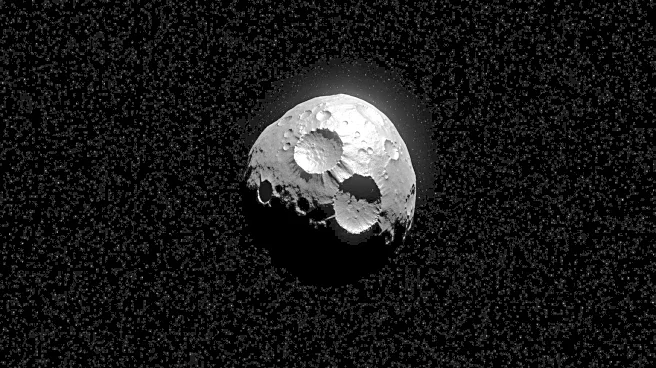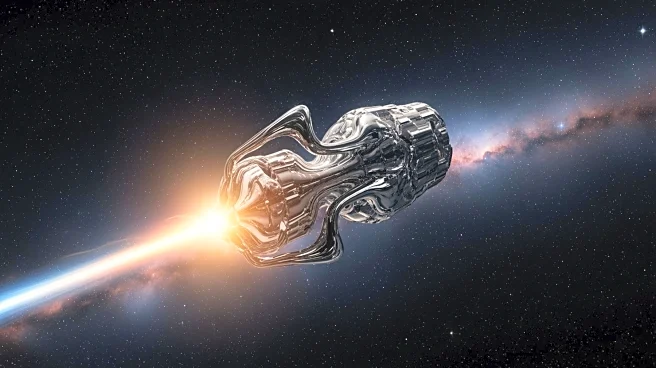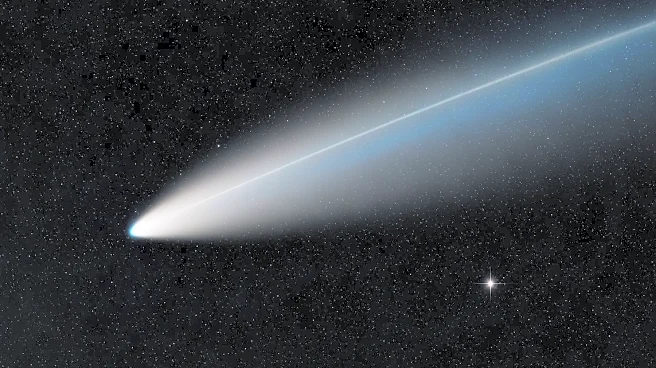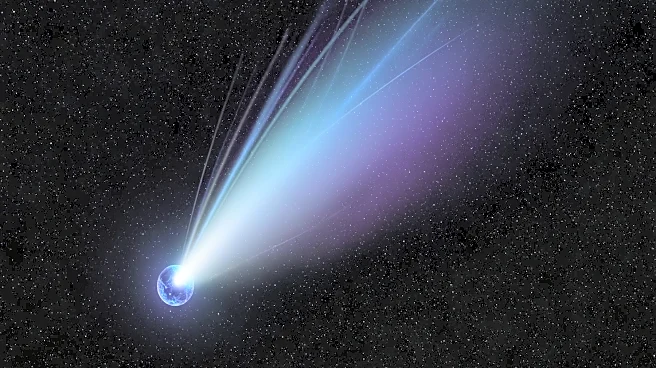What's Happening?
Comet 3I/ATLAS, an interstellar object discovered on July 1, has re-emerged in the predawn sky after a close approach to the sun on October 30. This comet is the third known interstellar object to visit
our solar system, believed to have originated from a distant star. Scientists have been analyzing its light fingerprint using various instruments to understand its composition and origin. Currently visible through amateur telescopes, the comet is located in the constellation Virgo, near the eastern horizon before dawn. As it moves away from the sun, its visibility is expected to decrease, although its unpredictable nature makes it difficult to forecast its disappearance.
Why It's Important?
The observation of Comet 3I/ATLAS provides valuable insights into interstellar objects and their characteristics. Understanding such objects can enhance knowledge about the formation and evolution of celestial bodies beyond our solar system. The comet's visibility offers a unique opportunity for astronomers and enthusiasts to study its properties, potentially contributing to broader scientific research on interstellar phenomena. The comet's unpredictable behavior also highlights the challenges in predicting the trajectories and visibility of such cosmic visitors.
What's Next?
As Comet 3I/ATLAS continues its journey away from the sun, astronomers will monitor its visibility and behavior. The comet's unpredictable nature means that it could experience sudden changes in brightness, offering further opportunities for study. Researchers will continue to analyze data collected from various observations to deepen understanding of interstellar objects. The comet's eventual disappearance from view will mark the end of this observational period, but the data gathered will contribute to ongoing research in astronomy.











